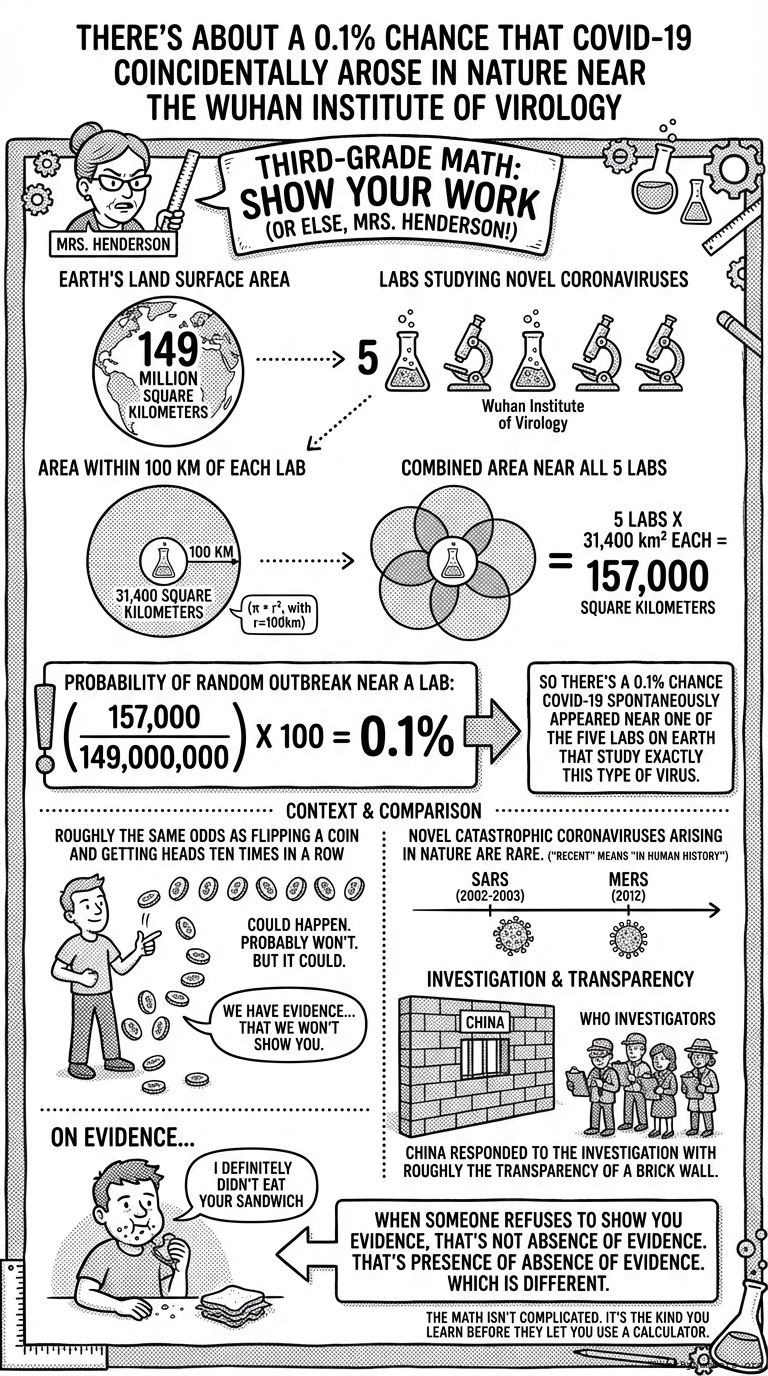A novel coronavirus that kills people appeared in Wuhan, China. This city happens to contain the Wuhan Institute of Virology, one of five labs on Earth that studies novel coronaviruses.
What are the odds that's a coincidence?
Let's do third-grade math. The kind they make you show your work for. The kind where if you don't show your work, Mrs. Henderson takes off points even if you got the right answer.
Earth's land surface area: 149 million square kilometers
Labs studying novel coronaviruses: 5
Area within 100 km of each lab: 31,400 square kilometers
Combined area near all 5 labs: 157,000 square kilometers (5 labs x 31,400 km² each)
Probability of random outbreak near a lab:
(157,000 / 149,000,000) x 100 = 0.1%
So there's a 0.1% chance COVID-19 spontaneously appeared near one of the five labs on Earth that study exactly this type of virus.
That's roughly the same odds as flipping a coin and getting heads ten times in a row. Could happen. Probably won't. But it could.
For context, novel catastrophic coronaviruses arising in nature are rare. SARS and MERS are the only recent examples, and "recent" here means "in human history."
Now, if you had evidence that categorically proved the virus didn't come from the lab, you'd probably share that evidence with the WHO investigators. Unless you're China, apparently, who responded to the investigation with roughly the transparency of a brick wall.
Historically, viruses do occasionally escape from labs. It's rare, but it happens. About as rare as a 0.1% probability event.
Sometimes people say "absence of evidence isn't evidence of absence," which is true. But when someone refuses to show you evidence, that's not absence of evidence. That's presence of absence of evidence, which is different. It's like if someone said "I definitely didn't eat your sandwich" while chewing.
The math isn't complicated. It's the kind you learn before they let you use a calculator.



Comments